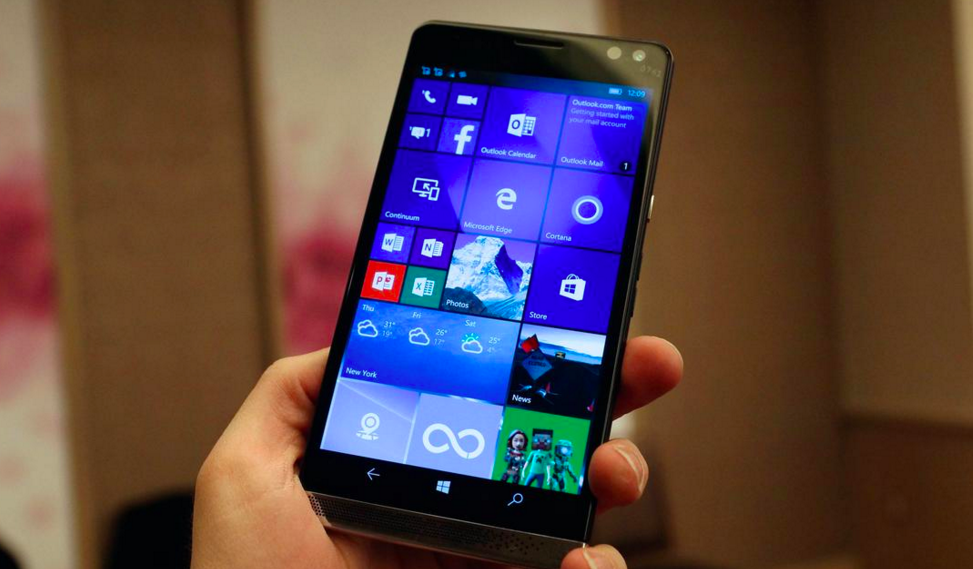HP Inc, the computer and printer portion of the newly split Hewlett-Packard—has announced the HP Elite x3, a high-end flagship spec phone running Windows 10 Mobile.
The HP Elite X3 is a giant phone with a 5.9-inch display, Qualcomm Snapdragon 820 running at 2.15GHz, 4GB RAM, 64GB storage, 5.96 inch 2560×1440 AMOLED screen with Gorilla Glass 4, 2×2 802.11a/b/g/n/ac, LTE-Advanced, 16MP rear and 8MP front cameras, both iris recognition and a rear-mounted fingerprint reader, microSD, USB 3 Type-C, dual SIM, a 4150mAh battery with wireless charging using both the Qi and PMA standards, and IP 67 water resistance (safe against immersion in 1 metre of water for 30 minutes)
Accordingly, it’s heavily promoting the phone’s security credentials: not only the dual biometrics, but FIPS 140-2 cryptography, 256-bit key full disk encryption, TPM 2.0, protection against firmware rollbacks, and so on. In a lot of regards the Elite x3 is not just a smartphone; HP is building a device that could be the successor to all manner of weird and wonderful industrial devices using the old Windows Mobile.
HP has built the x3 to tap into this market, thanks to its most unusual feature: 5 Pogo pin (The back of the HP Elite x3 shows its Pogo pins, though it’s still missing its fingerprint reader) contacts on the back. HP’s ambition is that third parties will be able to build an array of sleeves that fit over the phone to give it the extra capabilities it needs to meet all these industrial needs. The Pogo pins will be exposed to applications on the phone so that line-of-business apps will be able to use the additional hardware contained within the sleeves. The sleeves will also be able to include extended batteries.
Continuum, using the phone to drive a mouse, keyboard, and monitor, and run something resembling full desktop apps. To that end, the company is building two accessories for the x3. The first is the Desk Dock, which is very similar in purpose to the dock that Microsoft has for the Lumia 950 and 950 XL. The phone sits on the dock, connecting to it with its Type-C connector, and the dock sports a DisplayPort, two USB Type-A, one Type-C, and RJ-45 Ethernet ports. The design is arguably a little neater than Microsoft’s dock, as the phone plugs directly into it rather than at the end of another cable, though the downside to this is that it makes using the phone while docked more awkward.
Next is the Mobile Extender. It’s basically a laptop without any working parts of its own. It contains a battery, a 1920×1080 12.5 inch screen, and a keyboard, but no intelligence. For that, it depends on the x3, connected over USB Type-C. This isn’t the first time a company has tried to build a sort of “laptop dock” for a phone, but the high performance of the phone itself, combined with the fact that this is now a built-in capability of the operating system, thanks to Continuum, may give the idea some legs. The HP Mobile Extender, apparently codenamed “Falcon”.
https://youtu.be/gCJ9pYuxDNc
The Elite x3 is an uncompromising device. It’s not the first device aimed at “the enterprise,” but it’s doing so in a rather different way. The scope for novel hardware integration using sleeves and the Pogo pins, and the emphasis on Continuum, make it something a little different. It’s encouraging to see a company building so heavily on Windows 10 Mobile’s unique features, and offering a specification that gives up little or nothing compared to the competitors—presuming HP can release the thing in a timely way, it’ll be among the first wave of Snapdragon 820 devices to hit the market. Windows Phone never approached the cutting edge in quite this way.
Price and Availability: Price unknown, availability this summer.






